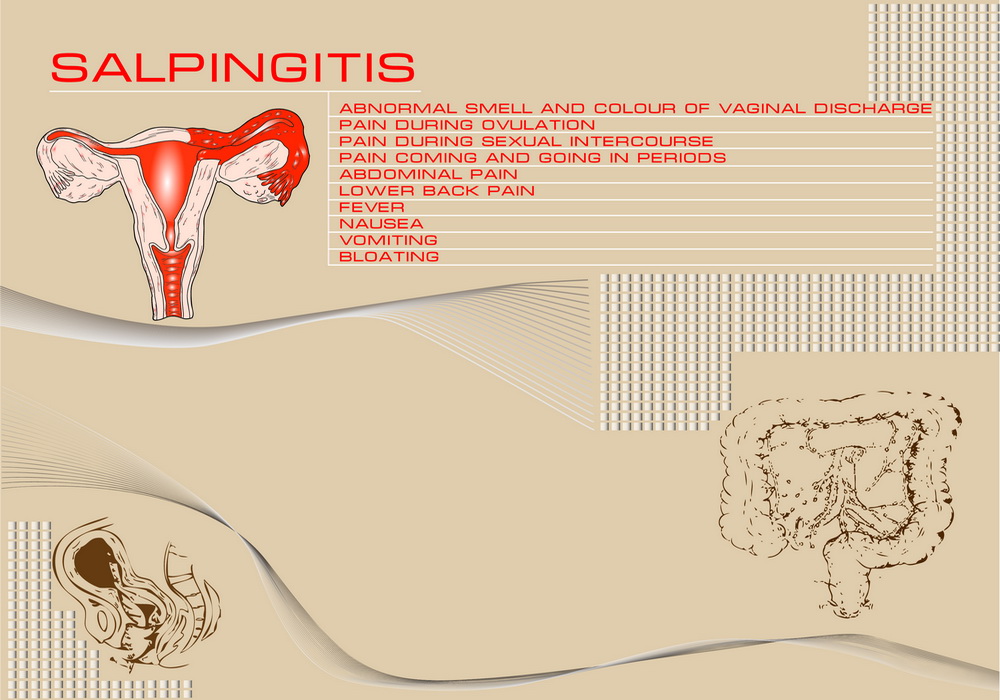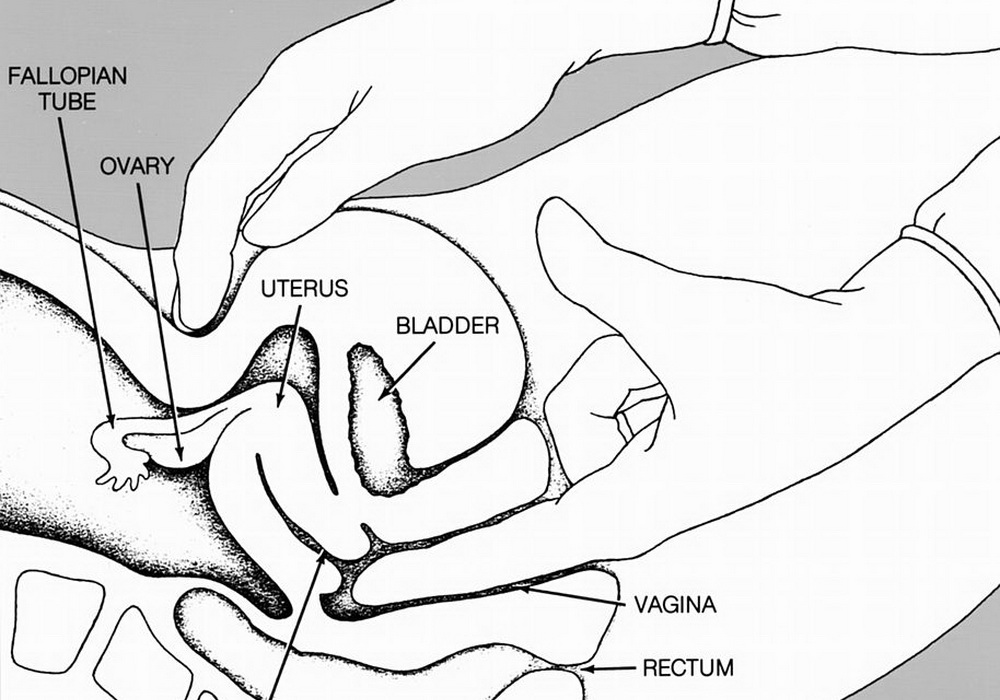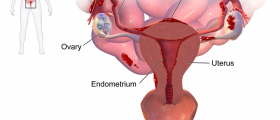
About Salpingitis
Salpingitis is the medical term for an inflammation of one or both fallopian tubes. It can lead to disturbing symptoms such as pain and fever, but it can also cause infertility if left untreated. This is because the inflammation can ultimately lead the fallopian tubes to be damaged and blocked. A tubal blockage means eggs cannot travel down from the ovaries, and sperm cannot travel up. Salpingitis may be caused by sexually transmitted diseases, but can also occur after childbirth, miscarriage, or other gynecological events — including something as simple as having an intrauterine device (IUD) placed.
- Important notification about information and brand names used in this slideshow!
- Photo Courtesy of Jo Ann Deasy by Flickr : www.flickr.com/photos/7682623@N02/3432951515/
- en.wikipedia.org/wiki/Salpingitis
- http://www.netdoctor.co.uk/womens-health/sex-life/salpingitis.htm
- http://www.betterhealth.vic.gov.au/bhcv2/bhcarticles.nsf/pages/Salpingitis
- http://www.ncbi.nlm.nih.gov/pubmed/406388

Symptom: Smelly Discharge
Vaginal discharge naturally changes throughout a woman's cycle, and many be abundant or barely there, transparent and stretchy or white and creamy, depending on the stage of your menstrual cycle. Many medical issues can cause discharge to change color (to yellow, brown, green, and others) or to become smelly. Whenever this happens, checking in with your doctor is a good idea. A simple fungal infection may be the culprit, but more serious causes including salpingitis may also be to blame. Smelly discharge is just one of the symptoms that may lead you to suspect you have salpingitis.
- Important notification about information and brand names used in this slideshow!
- Photo by shutterstock.com

Symptom: Pain During Periods And Ovulation
Abdominal pain, which can sometimes be severe, is the main symptom of salpingitis. It may come and go, but can also be constant in some cases. For many women with salpingitis, the pain is most obvious during ovulation, just prior to periods, and during menstruation itself. In addition, it is not at all uncommon to experience pain during sexual intercourse. Note that ovulation pain is normal for some women, while others also have long-term issues with period pains. The latter definitely warrants medical attention, while the former is nothing to be concerned about. It is the onset of abdominal (specifically pelvic) pain where none existed before that can point to salpingitis.
- Important notification about information and brand names used in this slideshow!
- Photo courtesy of Keirsten Balukas by Flickr : www.flickr.com/photos/starsalive/3988868478/

Symptoms Overview
Self-diagnosing online rarely benefits patients — and even if you conclude you have salpingitis from this slideshow, you'll have to see a gynecologist to receive the appropriate treatment. Having an idea what you might be dealing with can, however, prepare you for your medical appointment. Patients with salpingitis will typically experience pelvic pain, and they might have smelly or strangely colored discharged. Nausea and vomiting, fever, sweating and intermittent shivering can also be part of the picture. Is it salpingitis or something else? You won't know until you see a doctor, and that is definitely something you need to do right away if you have any of these symptoms.
- Important notification about information and brand names used in this slideshow!
- Photo by shutterstock.com

Risk Factors
Since salpingitis is extremely uncommon in virgins, it is safe to say that not being a virgin is a risk factor. Unsafe sex, especially with multiple partners, is another risk factor. This can cause some of the infections associated with salpingitis, as well as many other problems you would rather stay away from, including HIV and unwanted pregnancy. Ensuring that you only receive medical care from licensed healthcare providers practicing in hygienic conditions is not very difficult if you live in a developed nation, but could be harder if you live in a developing country with little oversight. In that case, always check that you go to a reputable doctor who uses sterile equipment.
- Important notification about information and brand names used in this slideshow!
- Photo courtesy of urbanfeel by Flickr : www.flickr.com/photos/30003006@N00/1975573964/

Symptoms: Nausea, Vomiting, Fever
Nausea, vomiting and even fever can also point to salpingitis and other reproductive infections. These symptoms should most definitely lead any woman to see a doctor within a few hours. Do be careful though, because the symptoms of salpingitis can easily be confused with those of other reproductive and abdominal issues — including kidney problems, appendicitis, ectopic pregnancy, and endometriosis. Seeing an experienced gynecologist is your best bet when you think you are dealing with a reproductive problem such as salpingitis. Insist on having proper tests rather than getting a diagnosis through clinical examination alone, to avoid misdiagnosis.
- Important notification about information and brand names used in this slideshow!
- Photo courtesy of Helga Weber by Flickr : www.flickr.com/photos/helga/4723657763/

Diagnosis: Pelvic Examination
When you go to see your gynecologist, a general abdominal examination is something you can expect. Your doctor will want to know where you are feeling tender, and if you have enlarged lymph glands. A pelvic examination will reveal tenderness and discharge and bring you a step closer to a final diagnosis. Since the symptoms of salpingitis can also point to many other reproductive conditions, blood tests, a mucus swab, and even laparoscopy may also be part of your diagnostic process.
- Important notification about information and brand names used in this slideshow!
- Photo courtesy of National Cancer Institute by Wikimedia Commons : en.wikipedia.org/wiki/File:Pelvic_exam_nci-vol-1786-300.jpg

Treatment With Antibiotics
Patients who are diagnosed with salpingitis will have a treatment plan tailored to the severity of their condition. You can usually simply take a course of antibiotics at home, and this treatment is successful in 85 percent of cases. Intravenous antibiotic treatment in hospital is reserved for cases of acute salpingitis, while cases that do not respond well to that treatment may require surgery. The chances of needing hospitalization are lower for patients who see medical attention as soon as symptoms show up, so never suffer in silence and take action as immediately after you notice something is wrong.
- Important notification about information and brand names used in this slideshow!
- Photo courtesy of Angela Doss by Flickr : www.flickr.com/photos/angela_sleeping/6980114153/

Causes
The germs that cause salpingitis usually enter the body through the vagina, after which they travel up through the cervix and uterus to the fallopian tubes. Sex is a particularly common way for this to happen. Gonorrhea, chlamydia, staphylococci, streptococci and mycoplasma are all associated with salpingitis. It is also possible for gynecological interventions to introduce germs to the female reproductive system. Childbirth, miscarriage, and abortion can all give germs a helping hand. Even the insertion of an intrauterine device or other gynecological procedures can introduce germs that will eventually lead to salpingitis.
- Important notification about information and brand names used in this slideshow!
- Photo courtesy of Sofie Harris by Flickr : www.flickr.com/photos/something-x-beautiful/7184184320

Salpingitis And Pregnancy
Women who receive treatment for salpingitis early on have a good chance that their fertility will not be impacted at all — a compelling reason for seeking medical care as soon as possible if there ever was one! If the one fallopian tube was blocked by salpingitis, a woman may still get pregnant naturally. A bilateral blockage is much trickier, and means the patient will need IVF to get pregnant. Unfortunately, there is no quick and easy way to see if your tubes were blocked. Doctors usually advise women to try to conceive for some time. If pregnancy doesn't happen, a laparoscopy can examine the condition of her fallopian tubes.
- Important notification about information and brand names used in this slideshow!
- Photo courtesy of Heather Williams by Flickr : www.flickr.com/photos/photosavvy/2756999773/

























Your thoughts on this
Loading...